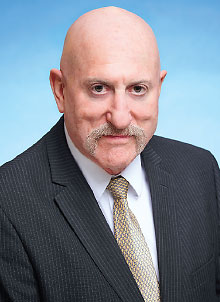Thirteen years ago, Congress passed the Mental Health Parity and Addiction Equity Act (MHPAEA). The law was designed to prevent health plans from imposing more onerous restrictions on mental health or substance use disorder benefits than those that apply to medical/surgical benefits.
Yet over the years, numerous state and federal investigations have found that insurers have not complied with the parity law. In a 2017 report, the Department of Labor (DOL) reported that it conducted 187 investigations and found that almost 50% of plans were not in compliance with MHPAEA.
But now, after years of advocacy on APA’s part, state and federal officials have new tools to regulate and audit health plans to ensure they are in compliance with MHPAEA. In December 2020, the Consolidated Appropriations Act (CAA), which included APA’s priority legislation, the Strengthening Behavioral Health Parity Act, was signed into law (
Psychiatric News).
“Parity is integral to ensuring all patients have access to adequate psychiatric services,” said APA’s Immediate Past President Jeffrey Geller, M.D., M.P.H., who testified before Congress in support of the Strengthening Behavioral Health Parity Act. “This is an example of APA advocacy resulting in changes that will benefit our patients. APA drafted this legislation, members lobbied for it, and that lobbying made a difference.”
DOL’s Employee Benefits Services Administration (EBSA) has played a leading role in regulating and enforcing parity among employer-sponsored health plans that are regulated by the federal government. With the passage of the CAA, EBSA is taking full advantage of its new enforcement abilities.
“We have made it clear that enforcement of the Mental Health Parity and Addiction Equity Act is among the highest, if not the highest, areas of focus for our health enforcement,” said Ali Khawar, EBSA’s acting assistant secretary and principal deputy assistant secretary. “I view this as essentially a human rights issue. No person who is struggling with addiction or [another] mental health issue is a statistic. These are real people with real challenges, and we can play a really significant role in improving how our system handles their care.”
Determined to Achieve Parity
EBSA develops an annual fact sheet outlining its work around MHPAEA enforcement. Yet the most recent report in 2020 did not suggest that the agency was successfully moving the needle on this issue, Khawar said. Over the years, it has become clear that enforcement is quite challenging, he added, particularly when it comes to non-quantitative treatment limitations (NQTL). “We haven’t had the kinds of results that I would like to see in enforcement,” he said. “We’ve provided a lot of guidance to improve compliance when it comes to NQTLs, but it’s a very complicated area. It’s challenging for consumers, providers, and insurers.”
NQTLs are elements of a health plan’s coverage that are not numerical in nature, such as requirements for prior authorization and formulary design. While examining how copays and deductibles compare between medical/surgical and mental health benefits may be more straightforward, NQTLs are much harder to identify and determine if they are in compliance with the parity law, especially for patients and, potentially, health care professionals, Khawar said.
“One of the challenges we had prior to the CAA is that we’d spend a lot of time dealing with employer plans just trying to get documentation to help us figure out what was going on,” Khawar said. EBSA has had longstanding authority to issue subpoenas to gather the documents it needs for analyses, but doing so is an onerous, resource-intensive process, he explained.
The CAA, however, streamlined that document-gathering process. Plans are now required to perform and document comparative analyses of their NQTLS, including what factors were used to determine which NQTLs apply to mental and substance use disorder benefits compared with medical/surgical benefits. The act also requires plans to make those documents available to federal and state authorities, such as EBSA, upon request. The agency issued guidance to health plans on what the changes mean for them in April. “I am very hopeful that it becomes much easier for us to get these documents so we can do the analyses necessary to determine whether these employer plans are in compliance,” Khawar said.
If EBSA determines that a plan is not in compliance with MHPAEA, and the plan does not take corrective action, the plan must inform all its members that it has been found in violation. The noncompliance finding is also included in a report EBSA is required to send to Congress every year, which includes the names of plans that did not submit sufficient information for EBSA to analyze.
“I think that very public approach holds a lot of promise,” Khawar said. “There are a number of plans out there that are trying to do the right thing. I don’t think any plan or issuer is going to want to be on a list that’s sent to Congress or have to inform its subscribers that the government found it out of compliance. I’m hoping that this part of the law helps us to achieve the promise of parity.”
The Next Advocacy Push
As EBSA pushes to ensure insurers are complying with MHPAEA, it will likely need additional resources. According to a DOL 2020 report, EBSA has 400 investigators responsible for five million health, pension, and other employee benefit plans.
The CAA included some funds through which EBSA has been able to hire additional full-time staff and experts to help think through issues around parity enforcement, Khawar said. President Joe Biden’s proposed Fiscal 2022 budget also includes $37 million for EBSA, which would be a very significant increase for the agency, Khawar added. “Because mental health parity is one of our highest priorities, you can expect that if we get more resources as a result of the budget process, we are using those to enhance our enforcement,” he said.
APA is focused on ensuring EBSA, as well as state agencies, receive the necessary funding. It helped coordinate a letter to DOL and the Office of Management and Budget requesting $25 million for EBSA so it can effectively implement the Strengthening Behavioral Health Parity Act. The letter was signed by 12 members of Congress. APA is also supporting the bipartisan Parity Implementation Assistance Act (S 1962/HR 3753), introduced by Sens. Chris Murphy (D-Conn.) and Bill Cassidy (R-La.) and Reps. Tony Cardenas (D-Calif.) and Brian Fitzpatrick (R-Pa.). The bill would authorize federal grants to state insurance departments to boost their compliance activities, as well.
“We need to ensure agencies have the resources necessary to make parity a reality,” Geller said.
In addition to enforcing parity compliance, EBSA is working to improve education among health care professionals and consumers about their rights around parity and to educate employers, issuers, and health plans about their obligations.
Right now, the agency is focusing on benefits for people with autism. “When you talk to providers who work with autistic patients, you hear a lot of overlap in the stories they tell about challenges in obtaining coverage and treatment,” Khawar said. “Complaints from consumers and providers will continue to be a very important way for us to get a sense of what is going on and which areas require our attention.” ■
Any physician who suspects that a health plan is not in compliance with MHPAEA can call EBSA at 1-866-444-3272 or visit EBSA’s website
here.

